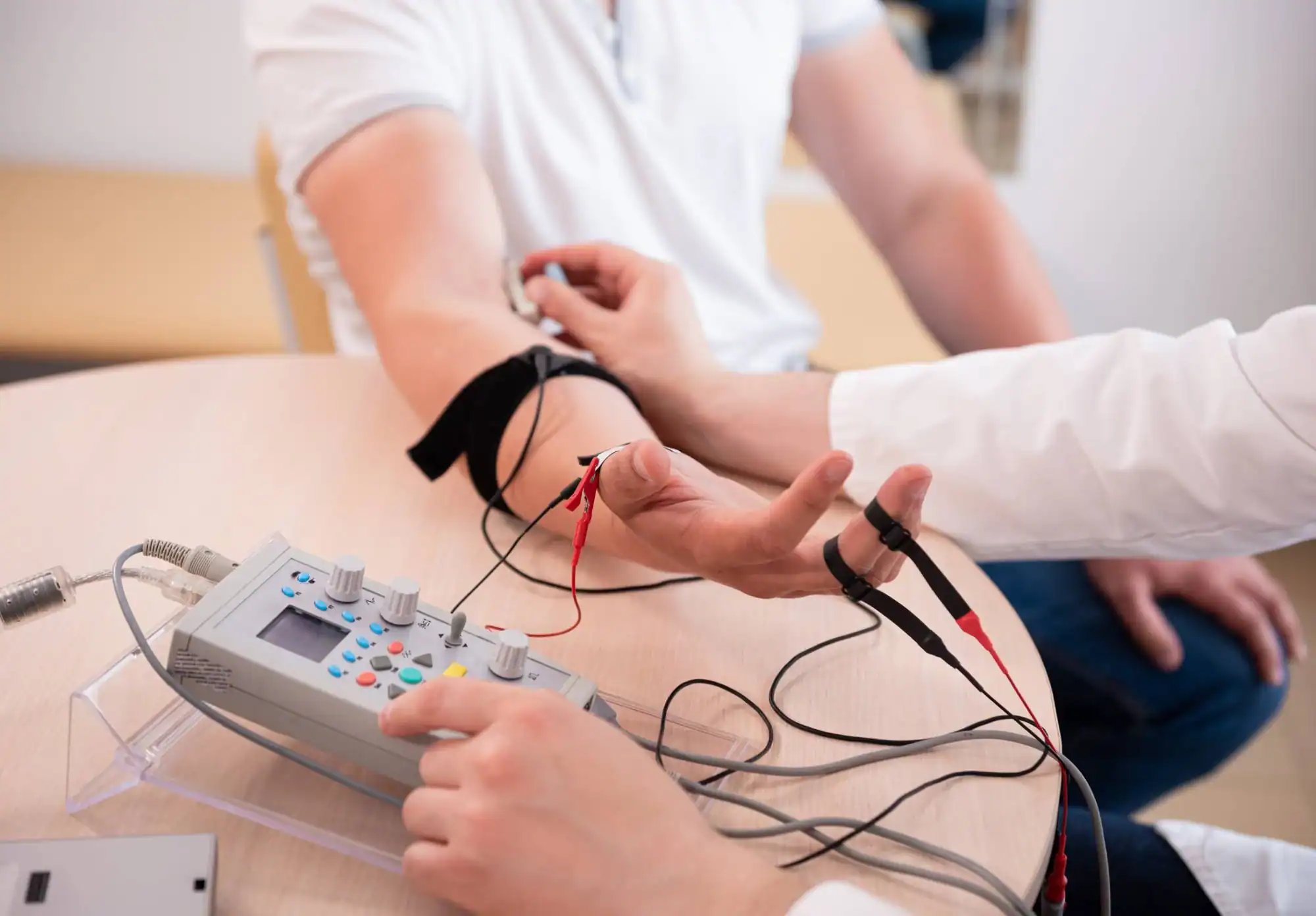Finally understand what’s causing your numbness, tingling, or muscle weakness with precise EMG testing.
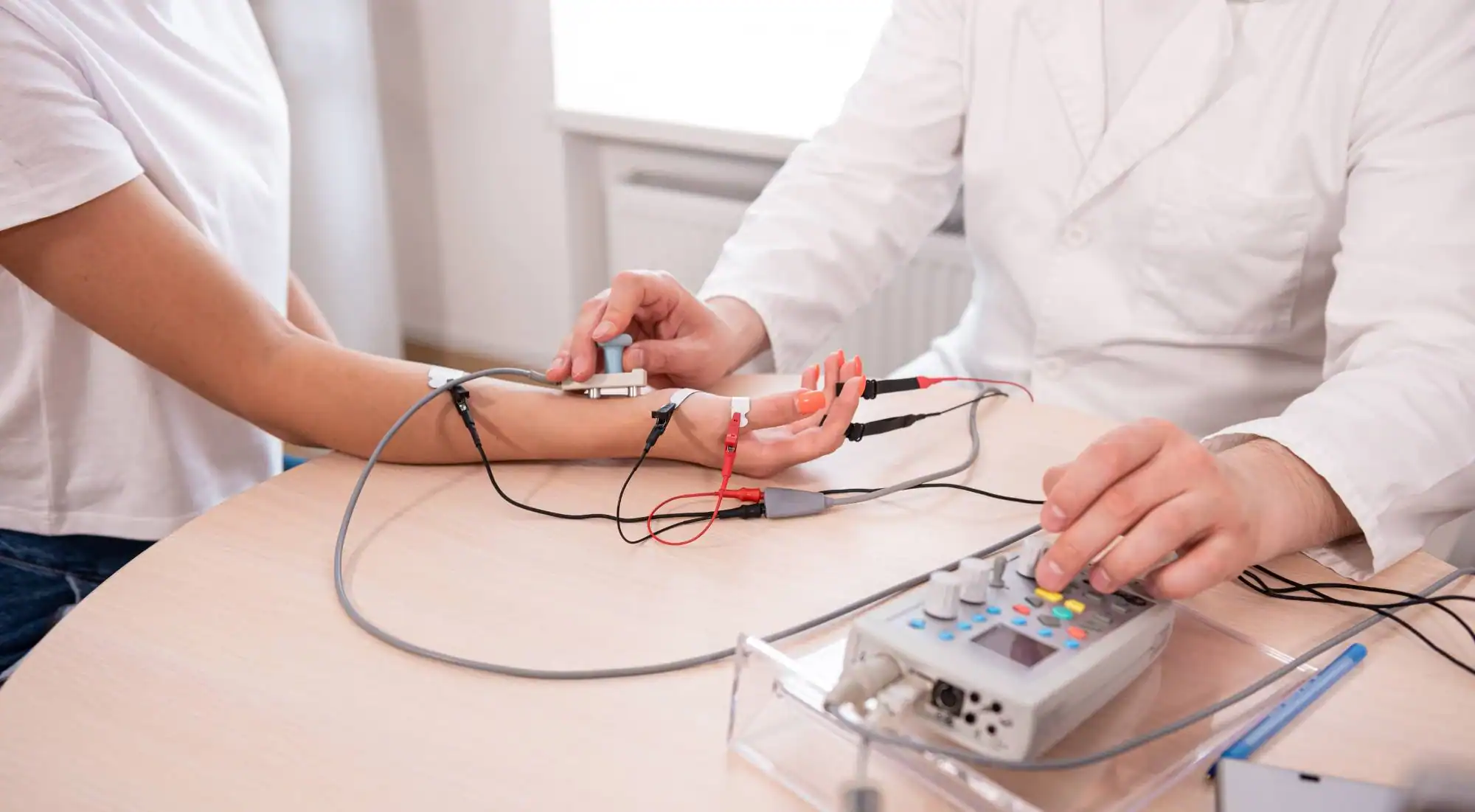
Reviews
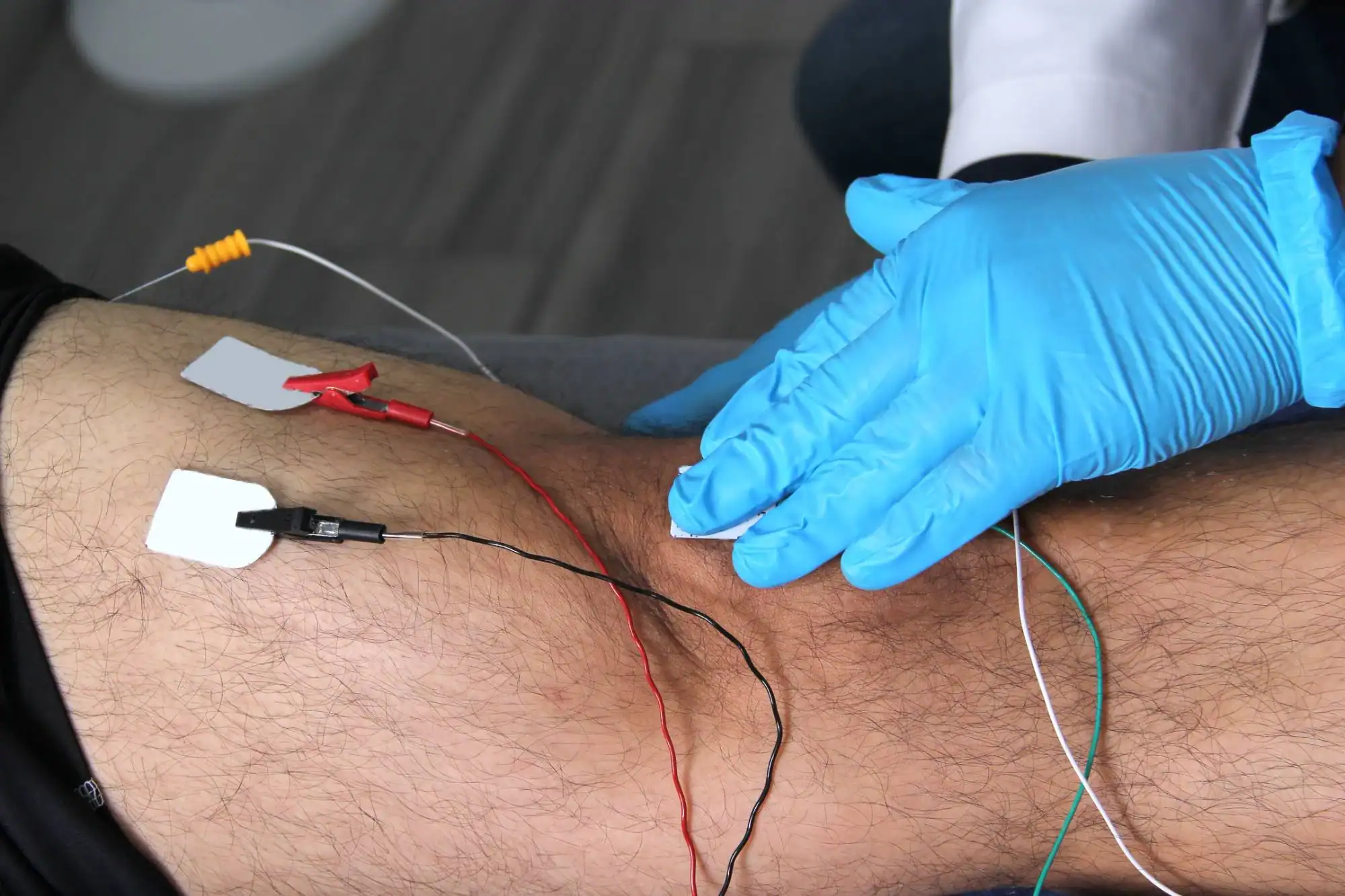
You’ve been dealing with symptoms that make work harder and daily tasks frustrating. The numbness in your hands during computer work. The tingling that keeps you up at night. The weakness that makes you wonder if something serious is happening.
EMG testing gives you concrete answers. Within an hour, you’ll know if your symptoms stem from nerve compression, muscle disorders, or conditions like carpal tunnel syndrome. No more guessing about treatment options or wondering if your symptoms are “all in your head.”
The test measures electrical activity in your muscles and nerves, pinpointing exactly where problems exist. Your doctor gets detailed data about nerve conduction speed and muscle response patterns. You get a clear path forward instead of more uncertainty.
We have been serving Brooklyn residents for years, specializing in spine and nerve disorders that affect daily life. Our team understands that nerve problems don’t wait for convenient appointments.
Located in Greenpoint, we focus specifically on diagnostic testing and treatment for conditions affecting the spine, nerves, and muscles. Our board-certified physicians work with state-of-the-art EMG equipment to ensure accurate results.
You’re not just another test appointment. Our staff takes time to explain what’s happening during your EMG test and what the results mean for your specific situation.
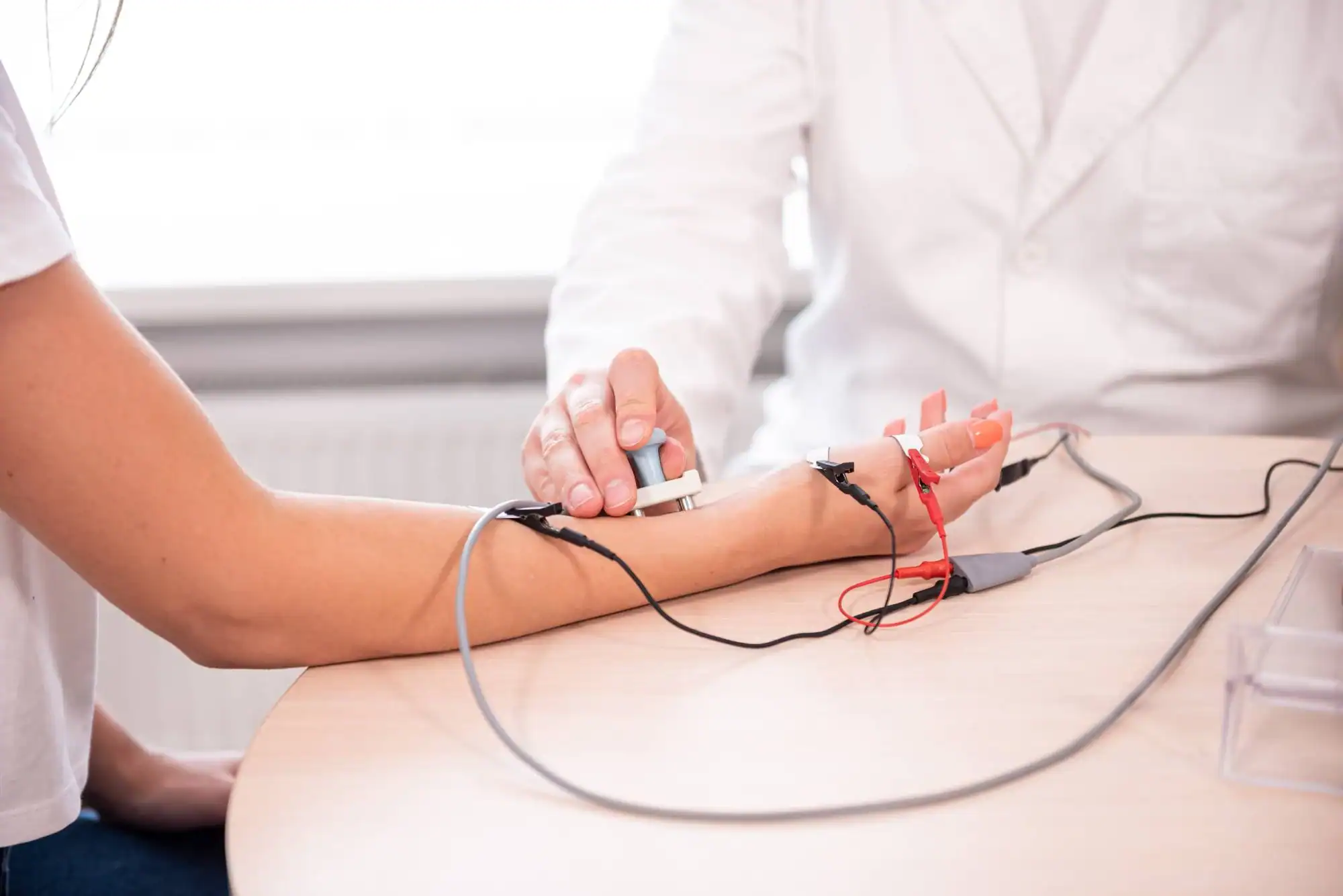
Your EMG test starts with a brief discussion about your symptoms and medical history. We explain exactly what will happen and answer any questions before beginning.
The nerve conduction study comes first. Small electrodes placed on your skin deliver mild electrical pulses to test how quickly signals travel through your nerves. You’ll feel brief, mild shocks – uncomfortable but not painful.
Next is the electromyography portion. A thin needle electrode is inserted into specific muscles to measure electrical activity. The needle detects signals when muscles contract and when they’re at rest. Most people describe the sensation as similar to getting blood drawn.
The entire process takes 30-60 minutes depending on which nerves and muscles need testing. You’ll see preliminary results immediately on the computer screen, and we explain what the patterns mean for your condition.
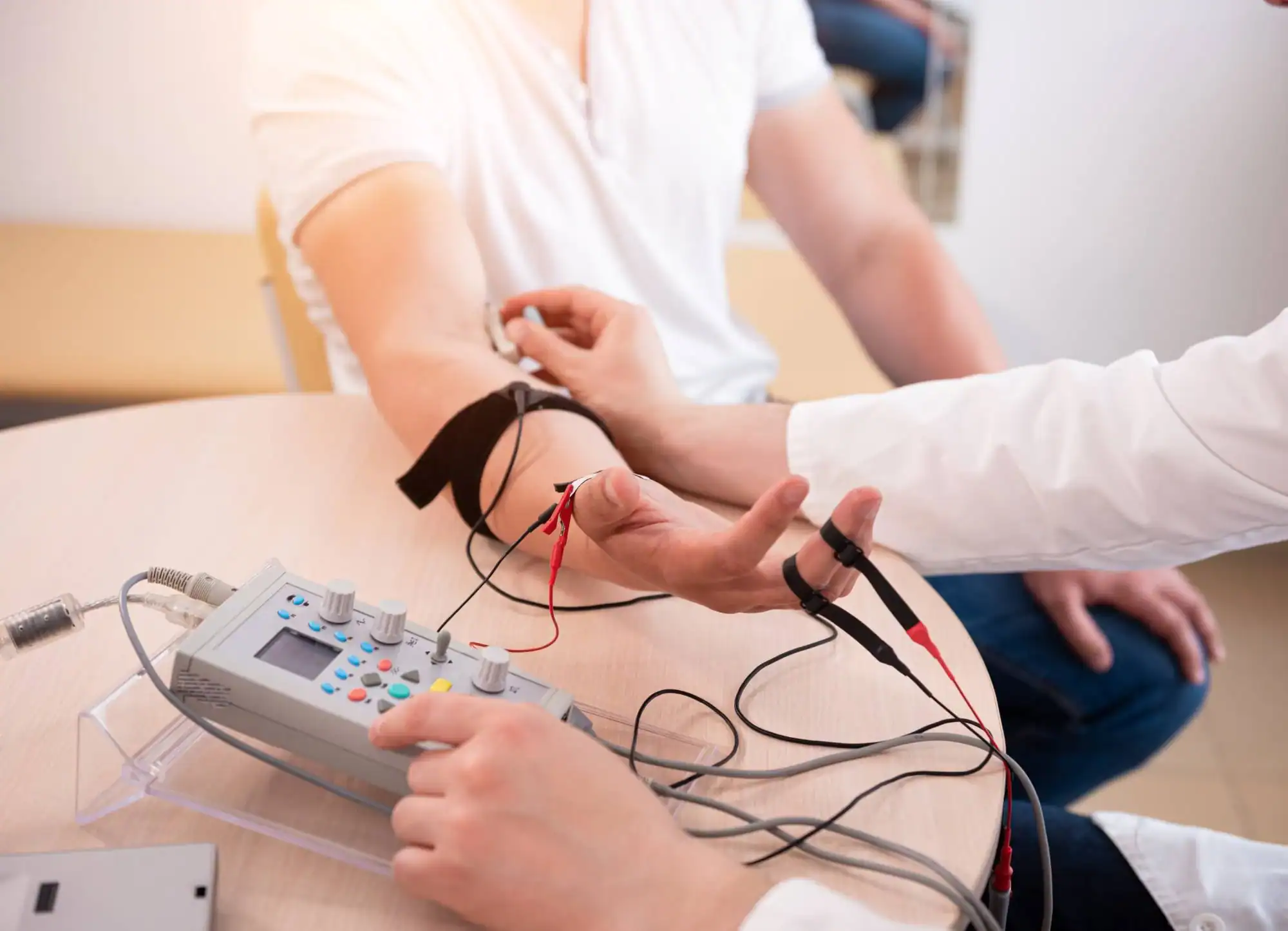
Ready to get started?
Your EMG testing includes both nerve conduction studies and electromyography to give a complete picture of your nerve and muscle function. The combination reveals whether symptoms come from nerve damage, muscle disorders, or problems where nerves connect to muscles.
Testing covers the specific areas where you’re experiencing symptoms. Hand numbness gets focused evaluation of median, ulnar, and radial nerves. Back pain with leg symptoms includes testing of nerves that run from your spine down to your feet.
You receive a detailed report within 24-48 hours that goes directly to your referring physician. The report includes specific measurements of nerve conduction speeds, muscle response patterns, and clear recommendations for treatment options. Your doctor can immediately develop a targeted treatment plan based on objective diagnostic data rather than symptom descriptions alone.
